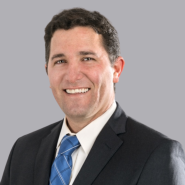Supplementing Element 1 with Element 2 Lacking the Claimed Function is not Obvious
- December 27, 2021
- Article
Associated People
Associated Technologies
In Ex parte FRANÇOIS ROY, JONATHAN CLOUTIER, and VINCENT TANGUAY (Appeal 2021-000050; USSN 13/966,396), the Patent Trial and Appeals Board (PTAB) recently reversed an examiner’s finding of obviousness in a rather involved rejection based upon four references, which hinged upon the presence of “thermofusable glue droplets providing a mechanical retention force to retain the wood strips in an interconnected spaced-apart relationship.”
Base claim 2 of the Roy Application recited (emphasis added)
[a] flexible sheet of wood strips, said wood strips being elongated wood strips of rectangular cross-section held together in a side-by-side aligned spaced relationship by thermofusable glue droplets, the thermofusable glue droplets being spaced longitudinally apart from one another along flat, opposed side edges of said wood strips, all having the same width between said opposed side edges and collectively interconnecting said wood strips to one another between said opposed side edges in a manner providing a constant spacing between the wood strips, the thermofusable glue droplets all having the same width between said opposed side edges collectively forming a flexible joint providing flexibility to said flexible sheet of wood strips, the thermofusable glue droplets providing a mechanical retention force to retain the wood strips in an interconnected spaced-apart relationship.
The examiner relied upon a primary reference showing all elements of the claim except for droplets of glue and their spacing, and sought to remedy the deficiency with a secondary reference describing the use of beads for spacing wood planks or “fillets.” The secondary reference, however, did not indicate that the spacing beads were adhesive or otherwise “providing a mechanical retention force to retain the wood strips.”
Although the Roy application provided no experimental examples showing an effect to the use of droplets, surprising or otherwise, relative to continuous lines of adhesive, the PTAB considered sufficient for the non-obviousness of the claims the statements of “providing flexibility” in the claim and description, and the mention in Roy’s description of the use of adhesive tapes or adhesive fiber layers often encountering detachment during manipulation and transportation, and/or warping and consequent distortion of inter-board spacing and additional fabrication costs.
The PTAB considered persuasive the appellant’s arguments that the secondary reference’s beads (analogized to droplets) would not perform the same function as the primary reference’s adhesive because such beads did not adhere adjacent panels, but instead were for spacing. The PTAB therefore stated that the examiner’s finding that one of ordinary skill in the art would have had a reason to replace the primary reference’s adhesive with the secondary reference’s spacer beads to achieve the same function was not supported by the evidence presented, and that even if one were to make such a substitution, the examiner’s rejection did not identify evidence that the spacer beads would achieve the recited property of “providing a mechanical retention force” such that adjacent wood strips are “held together.”
The appeal result in the Roy application is a reminder to applicants that reciting the function of a claim element may help to distinguish over a combination of cited art in which the substituted element from the secondary reference does not provide the claimed function, even though the function / effect is present in the primary reference from a different element.
Recent Publications
Federal Circuit Holds Prosecution History Disclaimer Applicable to Design Patents
by Sana Tahir, Law Clerk and Andrew Ollis, Partner
The PTAB Radically Changes its Approach to Discretionary Denials
by Andrew Ollis, Partner and Sana Tahir, Law Clerk










 Counseling & Strategic Advice
Counseling & Strategic Advice IP Transactions
IP Transactions Litigation
Litigation PTAB Proceedings
PTAB Proceedings Technology Transfer
Technology Transfer Trademark & Designs
Trademark & Designs U.S. Patent Procurement (Application Drafting & Prosecution)
U.S. Patent Procurement (Application Drafting & Prosecution)








